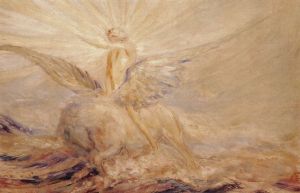…everyone is moving.
Clive Bell, 25, is moving in with his new wife, Vanessa Stephen Bell, 27. Clive has been living with his family since graduating from Cambridge University. Vanessa has been living in the tacky neighbourhood of Bloomsbury since she moved her brothers and sister, Virginia, 25, out of Hyde Park Gate when their widowed father died, more than three years ago. Smartest thing she ever did.
Their brother Thoby unexpectedly died last fall, age 26. Two days later, Vanessa finally accepted Clive’s proposal.
Now that Vanessa is a married Edwardian lady with a husband, it’s time for her siblings to move out.
Virginia and Adrian, 24, have found a suitable place, 29 Fitzroy Square. Virginia has heard that the family of the playwright George Bernard Shaw, 50, had lived there when they first emigrated from Dublin. That’s a good omen.
Moving a few blocks away won’t separate Virginia and Vanessa. The Bell marriage is a bigger threat. Virginia worries that the intimacy that she has shared with her sister will suffer.
But at least now she will have her own place, with Adrian. She can spend more time writing.
And their friends will still come on Thursday evenings, which Virginia always looks forward to. As she described these evenings later:
Talking, talking, talking…as if everything could be talked…’
This year, we’ll be telling stories about these groups of ‘such friends,’ before, during and after their times together.
Watch the BBC Two drama Life in Squares about the Bloomsbury group, Mondays, 3rd and 10th August, at 9 pm, and let us know what you think.
To walk with me and the ‘Such Friends’ through Bloomsbury, download the Virginia Woolf and the Bloomsbury Group audio walking tour from VoiceMap.










